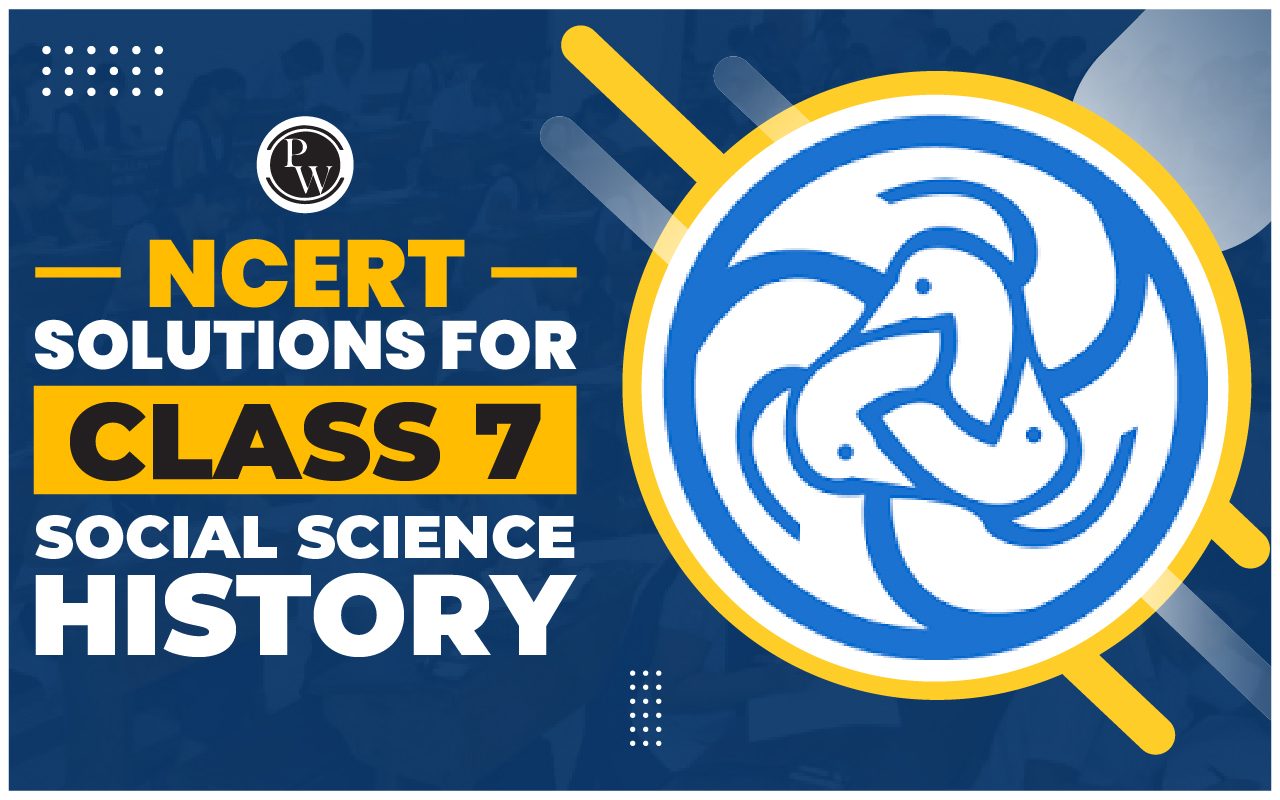

NCERT Solutions for Class 7 Social Science Chapter 3 Climates of India provide students with easy-to-understand solutions to India diverse climate. This chapter explains important topics like the factors that affect climate, the monsoon system, seasonal changes and how climate influences the economy, culture and daily life.
With step-by-step solutions for all in-text and exercise questions these solutions help students grasp key concepts easily, revise effectively and prepare confidently for exams.
Climates of India Class 7 Social Science
The chapter Climates of India helps students understand the diverse climatic conditions across the country and how geography, natural forces and human activities influence weather and climate. It begins by distinguishing weather from climate explaining that weather refers to short-term atmospheric conditions, while climate is the long-term pattern of weather over a region.
Students learn about the key factors affecting India climate, including latitude, altitude proximity to the ocean and monsoon winds, which together create varied climate types such as tropical wet, desert mountainous and temperate regions.
The chapter also explains the monsoon system, detailing how summer monsoons bring heavy rainfall and winter monsoons bring dry winds and highlights how these patterns influence agriculture, water resources, and human activities. Furthermore the chapter explores the impact of climate on the economy, culture, and society, showing how clothing, housing, food habits, festivals and population distribution are shaped by local weather. Students also learn about natural disasters like floods, cyclones, landslides and forest fires and how traditional knowledge, such as observing animal behavior and plant cycles, was used to predict weather.
The chapter introduces the concept of climate change, its causes and consequences, including rising temperatures, melting ice, more frequent disasters and effects on agriculture and human life.
Through practical exercises, students are encouraged to observe local weather patterns, analyze rainfall and temperature trends and understand the connection between climate and cultural practices. Overall this chapter aligns with the Class 7 Social Science syllabus providing students with a comprehensive understanding of India’s climate and its significance in daily life, agriculture and society.
Class 7 Social Science Climates of India Question Answers
Below are the NCERT Solutions for Class 7 Social Science Chapter 3 Climates of India.
The Big Questions? (Page 45)
Question 1. What makes India climate so diverse?
Answer:
India climate is different in many places because it is very big, has different land types like mountains, plains, and deserts, and is near the Tropic of Cancer. The Himalayas stop cold winds, and the monsoon winds bring rain, making the climate varied.
Question 2. What are the monsoons? How are they formed? (Page 45)
Answer:
Monsoons are winds that change direction with the seasons and bring a lot of rain. In summer, the land gets hot, so moist winds from the Indian Ocean blow to the land and cause rain. In winter, the land cools and dry winds blow from land to the sea bringing little rain.
Question 3. What is the effect of climate on economy, culture and society? (Page 45)
Answer:
Climate affects many parts of our lives. It changes how we work, how we live, and where we settle.
Economy: Climate affects jobs and farming. In warm and sunny places, people can grow crops like rice and cotton. In very cold or dry areas, farming is hard so people do other work like taking care of animals or working in factories.
Culture: Climate affects what people wear, eat and how they live. In cold places, people wear warm clothes and build houses to keep heat in. In hot places, people wear light clothes and make houses cool. Festivals and traditions also depend on the seasons and weather.
Society: Climate affects where people live. Harsh places have fewer people, while comfortable areas have more people. Natural disasters like floods or droughts can make people move to safer places and change their way of life.
Question 4. How can understanding the climate help us to prepare for natural disasters? (Page 45)
Answer:
Knowing about the climate helps us stay safe and protect our homes and farms. It also helps us plan ahead for bad weather.
-
People can build stronger houses to survive storms and floods.
-
Farmers can plan their crops and water use during droughts.
-
Early warning systems can alert people about cyclones or heavy rain.
-
Understanding weather patterns helps reduce damage and save lives.
Question 5. What is climate change? What are its consequences? (Page 45)
Answer:
Climate change means the weather on Earth is changing a lot over a long time. It happens mainly because of pollution from cars, factories, cutting trees and burning fuels, which makes the Earth hotter.
-
Rising temperatures: The Earth is getting hotter causing heatwaves.
-
Melting ice: Ice in polar areas melts, making sea levels rise.
-
More natural disasters: There are more floods, storms and droughts.
-
Harm to animals: Some animals lose their homes and food like polar bears.
-
Effect on people: Farmers may not grow enough food, and some people may have to leave their homes.
Let’s Explore (Page 47)
Question 1. Which are your favourite seasons? Write a short essay explaining your reasons.
Answer:
My favourite seasons are winter and monsoon. I like winter because the weather is cool and pleasant. I can wear warm clothes, drink hot chocolate and enjoy morning walks without feeling too hot.
I also like the monsoon season because it rains a lot. The air feels fresh, the plants look green and I enjoy playing in the rain. Farmers get enough water for their crops and rivers and lakes are full.
These seasons make me happy and give me a chance to enjoy different activities.
Question 2. Discuss in groups of three or four and find out whether there are specific events connected to the seasons in your region. Collect information about them songs, feasts with specific types of food practices in different seasons etc. Document these and share your discoveries with your class. (Page 47)
Answer:
In my region, different seasons have special events and festivals. For example:
-
Winter: People celebrate Makar Sankranti and eat sesame seeds and jaggery sweets.
-
Summer: Many families enjoy picnics and mango festivals.
-
Monsoon: Farmers celebrate rain-related festivals and people sing songs to welcome the rains.
-
Autumn: People celebrate Diwali with sweets, lights, and traditional rituals.
These events show how people enjoy the season and follow traditions related to weather and nature.
Question 3. Do you know which trees in your area change colours before the onset of winter? Are there trees that shed their leaves around this time? Why do you think this happens? Find out and document the local names of these trees.(Page 47)
Answer:
Some trees change colour before winter, and some shed their leaves completely. This helps them save water and energy during the cold and dry season.
Examples of trees that shed leaves:
-
Peepal – called Arasa Maram in Tamil Pippal in Hindi
-
Neem – called Veppa Maram in Tamil Nimba in Marathi
-
Gulmohar – called Mayflower tree in English Krishna Chura in Bengali
Question 4. Udhagamandalam (Ooty) and Coimbatore are almost at the same latitude. The range of summer temperatures in Ooty is 10-25°C while that in Coimbatore is 25-38°C. Why do you think there is such a difference in temperature between these two places? (Page 51)
Answer:
Ooty is cooler because it is high up in the Nilgiri Hills (about 2,240 meters above sea level), while Coimbatore is much lower (about 400 meters). Higher places are cooler because the air is thinner and holds less heat. So even at the same latitude, Ooty is much cooler than Coimbatore.
Question 5. Since the ability to predict the monsoon rainfall has been an important aspect of life in India, our ancestors observed Nature around them carefully. They developed local traditional knowledge through their experience. This traditional knowledge is an important heritage we must preserve.
For example, fishermen on the Konkan coast predict the onset of the monsoon when fishes that normally stay under water are seen at the surface; in parts of southern India monsoon is said to arrive within 50 days after the Golden Shower tree (Cassia fistula) blossoms. Some communities also believe that when crows build their nests high on tree-tops, it indicates less rainfall, whereas if the nests are lower, rainfall is likely to be heavy. Make a list of such local knowledge about rain, fog, snow or hail in your area. (Page 56)
Answer:
Our ancestors watched nature carefully to predict the monsoon. Some signs they used are:
-
Ants coming out in large numbers: Rain may come soon.
-
Frogs croaking loudly: Rain is likely.
-
Ring of clouds around the moon: Rain might come.
-
Red sky at sunset: Usually means no rain next day.
-
Birds chirping early and loudly: Weather will be clear.
-
Sudden morning cold: Fog or dew may appear.
-
Black butterflies flying: Rain could come soon.
Question 6. Have you seen or read about floods? Look at the physical map of India. Discuss in pairs why you think floods occur in the areas like Uttar Pradesh, Bihar, Kerala, Andhra Pradesh and Assam. (Page 60)
Answer:
Floods happen when too much water comes in rivers or heavy rain falls in a short time. In places like Uttar Pradesh, Bihar, Kerala, Andhra Pradesh and Assam, rivers like the Ganga, Brahmaputra, and Godavari overflow during heavy rains. Melting glaciers, storms and poor drainage also cause floods. These floods damage homes, crops, and roads and affect people and animals.
Think About it
Question 1. What are clouds? and what are they made of? (Page 59)
Answer:
Clouds are masses of tiny water droplets or ice crystals that float high in the sky. They appear as white or grey shapes and can take many forms, like fluffy, thin, or layered clouds. Clouds are not made of liquid water like the water we drink; instead they are made of millions of very tiny water droplets or ice crystals that are so light they can stay in the air.
Clouds form when warm, moist air rises and cools. As the air cools, the water vapour in it condenses into tiny droplets or freezes into ice crystals. These droplets gather together to form clouds. Clouds are important for the Earth weather because they bring rain, snow, or hail, depending on the temperature and conditions.
Different types of clouds tell us different things about the weather. For example:
-
Cumulus clouds are fluffy and white, usually indicating fair weather.
-
Stratus clouds form layers and may bring light rain or drizzle.
-
Cirrus clouds are thin and high up, usually showing that the weather will change soon.
Question 2. Imagine you are a farmer in India. Write a short diary entry about how you would prepare for the rainy season.
Answer:
Dear Diary,
The monsoon clouds are gathering, and it’s time to get my fields ready for the rains. I started by plowing the soil so it can absorb water properly. I have chosen seeds for paddy and maize because they grow well with plenty of rain. I also cleaned the irrigation channels to prevent waterlogging and make sure the rainwater flows smoothly.
My cattle need a safe place too, so I reinforced their shed to keep them dry. I have also stored enough food and firewood to be prepared for heavy rains. I hope for good rains this year so that my crops grow healthy and give a good harvest.
Question 3. Identify a natural disaster (e.g., cyclone, flood, tsunami, landslide, or forest fire) and write a short essay that includes the causes and impacts. Suggest actions that individuals, communities and the government can take to reduce the impact.
Answer:
Floods – Causes, Impacts and Safety Measures
Floods are one of the most common natural disasters. They happen when too much water overflows onto land that is usually dry. Floods can be caused by heavy rainfall, rivers overflowing, dam failures or melting glaciers. In coastal areas, storms and tsunamis can also lead to floods.
Impacts of Floods:
-
Homes, roads, and bridges get damaged.
-
Crops are destroyed, causing food shortages and economic loss.
-
Drinking water gets contaminated leading to diseases.
-
Animals lose their habitats, and people may have to leave their homes.
Ways to Reduce the Impact:
-
Individuals: Avoid building houses in flood-prone areas, keep emergency kits ready and stay informed about weather updates.
-
Communities: Build embankments, clean drainage systems, plant trees to reduce water runoff, and organize local awareness programs.
-
Government: Construct strong dams and levees, improve weather forecasting, provide early warnings and offer relief and rehabilitation to affected people.
NCERT Solutions for Class 7 Social Science Climates of India PDF Download
Students can download the NCERT Solutions for Class 7 Social Science Chapter 3 Understanding the Weather in PDF format from the link below. This PDF provides clear and easy-to-understand answers for all in-text and exercise questions, helping students study effectively, revise quickly and prepare well for exams.
NCERT Solutions for Class 7 Social Science Chapter 3
Study without using the internet
Benefits of Using NCERT Solutions for Class 7 Social Science Chapter 3 Climates of India
Here are the Benefits of Using NCERT Solutions for Class 7 Social Science Chapter 3 Climates of India.
-
Helps students easily understand weather concepts, including temperature, rainfall, air pressure, humidity and wind patterns.
-
Key topics like weather elements, instruments for measurement, and the difference between weather and climate can be revised quickly improving exam performance.
-
Students can revise important points before tests using these solutions.
-
Solving in-text and exercise questions helps students get familiar with the types of questions commonly asked in exams.
-
Working on sample exercises and practical activities improves time management and overall preparation.
-
Helps students relate classroom learning to daily life and builds a strong foundation for future studies in science and social science.
NCERT Solutions for Class 7 Social Science Chapter 3 FAQs
What will I learn in Chapter 3 Climates of India?
Why is India climate so diverse?
What are monsoons and how do they form?
How does climate affect daily life and society?
What is climate change, and what are its effects?












